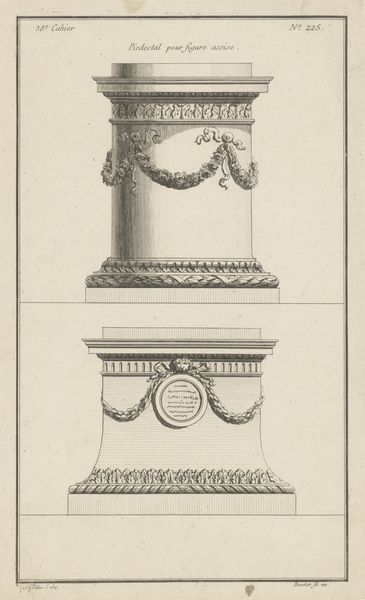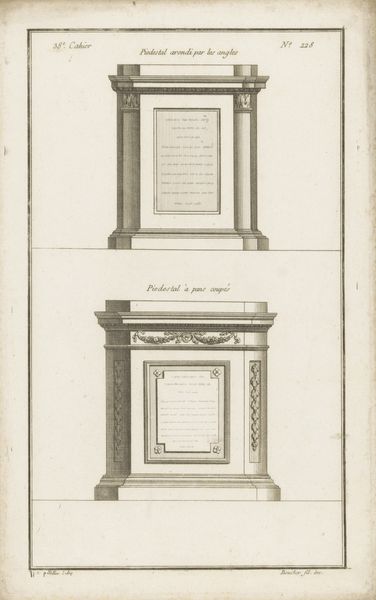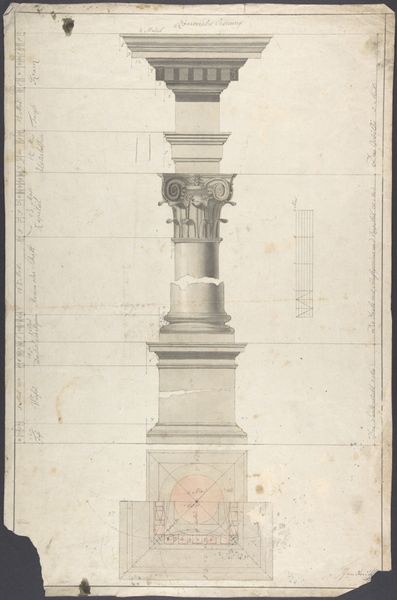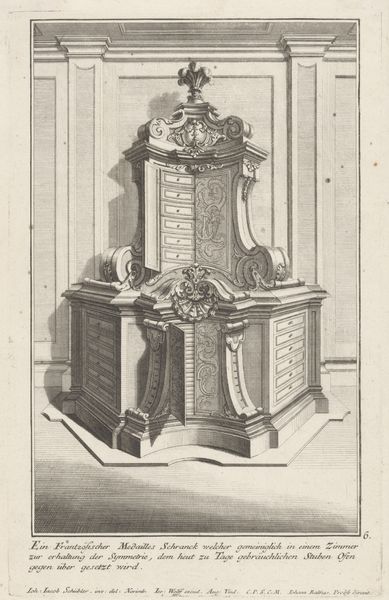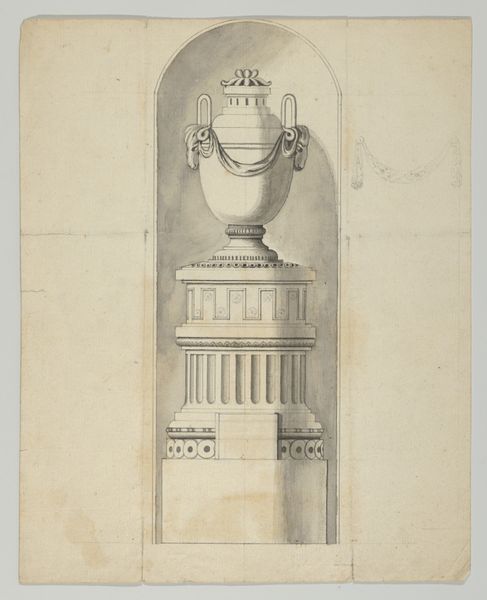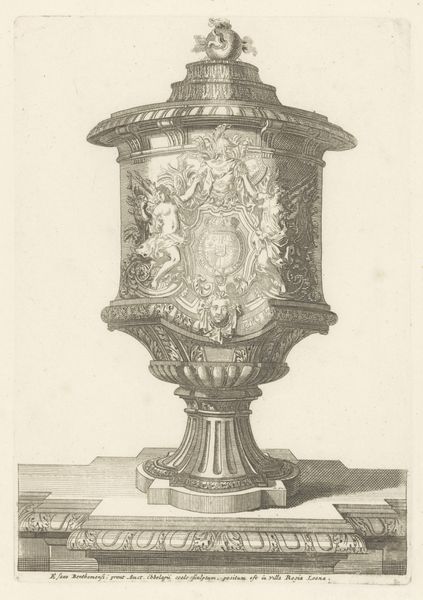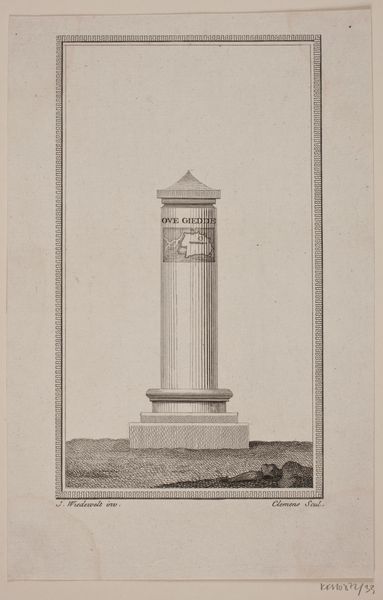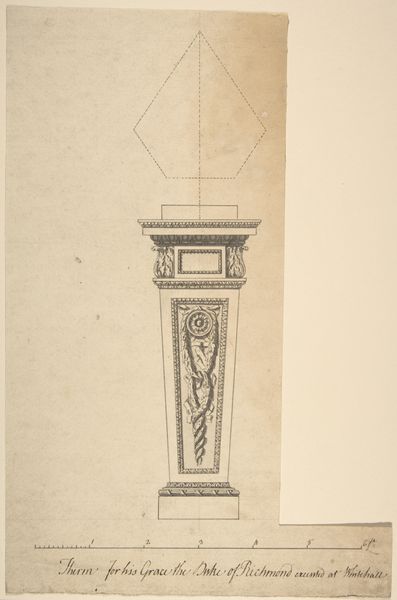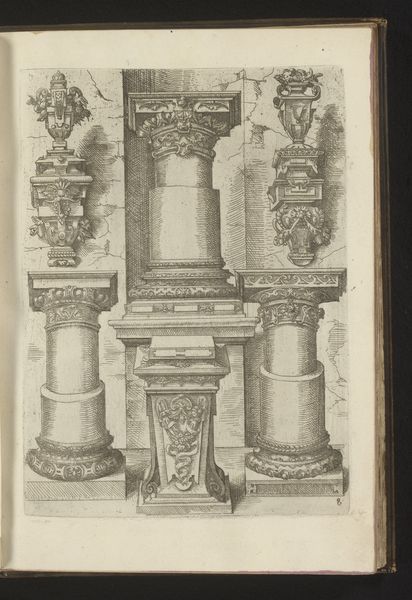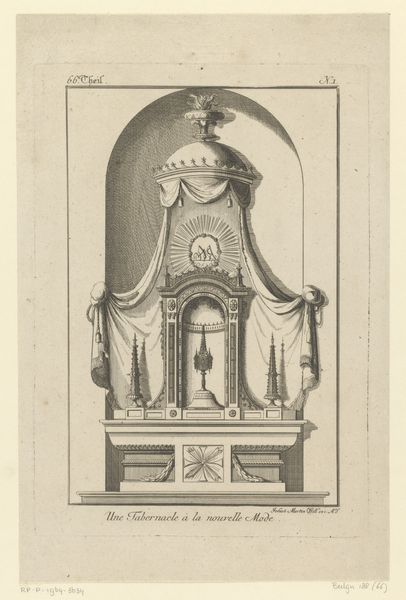
#
aged paper
#
toned paper
#
homemade paper
#
vintage
#
photo restoration
#
parchment
#
old engraving style
#
historical photography
#
old-timey
#
golden font
Dimensions: height 329 mm, width 204 mm
Copyright: Rijks Museum: Open Domain
Curator: Look, two meticulously drawn pedestal designs. Both by Jean Pelletier, crafted between 1772 and 1779, part of the Rijksmuseum collection. One is "Piedestal pour figure debout," for a standing figure, and the other "pour figure assise," for one seated. What do you think at first glance? Editor: They feel so...restrained. Beautifully drafted, sure, but so devoid of life. Like architectural diagrams before anything real happens, before a mason's sweat goes into shaping stone. Curator: Restrained elegance, I'd call it. Look at the delicacy of the garlands draped on each pedestal. There’s an intentionality here – Pelletier wasn't just drawing boxes. He was designing a stage, a support system. It gives you a chance to glimpse at an artisan's vision for something more. It makes you want to find the statue they're designed to showcase. Editor: But look at the process, think of the workshops. All that precise engraving, replicating these designs. And who was using them? Architects, certainly. Maybe wealthy patrons choosing designs for their estates. The materiality— the paper, the ink— speaking volumes about labor and social hierarchy. Was Pelletier himself even shaping the actual objects? Curator: Perhaps not physically, but mentally, imaginatively he was deeply involved. I feel Pelletier injects his own kind of breath. And you can see this even in something seemingly rigid and calculated. Consider the difference in designs, a figure in repose necessitates an altogether distinct supporting shape than one captured mid-motion. Editor: Okay, yes, the adaptation in form. That gets at the link between object, support and intention. What I love is thinking about the materials reproducing these drawings, the ink, the handmade papers… That is where I start seeing stories— who was producing them? How far did those images circulate? What kind of aesthetic did they represent, and whom was it serving? Curator: Serving taste, serving posterity. And yes, provoking questions, it's lovely, isn't it? Editor: Absolutely. It goes back to who held the hammers, literally or figuratively. Fascinating glimpse into power through form and process.
Comments
No comments
Be the first to comment and join the conversation on the ultimate creative platform.
